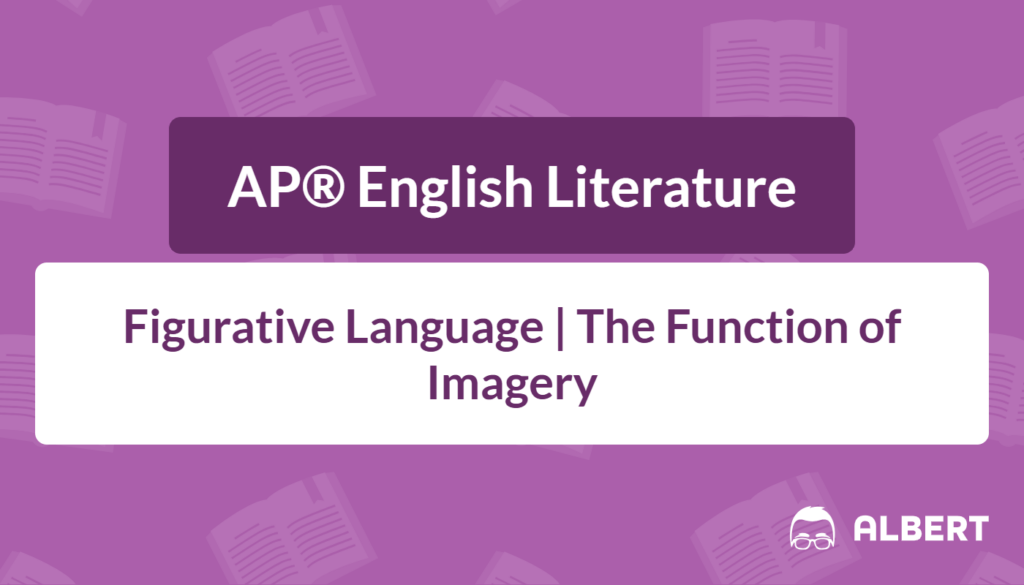What We Review
Understanding Imagery in Literature
Figurative language allows authors to share ideas and emotions in vivid ways, and one of its most essential elements is imagery. This powerful tool engages the senses—sight, sound, taste, touch, and smell—to help the audience experience a story as if they were part of it. Because the AP® Literature exam often rewards close reading skills, understanding how to spot and analyze imagery in literature is critical. By learning what imagery is, the types of imagery, and how it shapes themes or characters, students can sharpen their interpretive abilities and produce stronger, more focused essays.
What Is Imagery?
In literature, imagery is descriptive or figurative language that appeals to one or more of the five senses. It draws the reader into the world of the text, sparking emotion and creating memorable settings. When readers can almost see or hear the details described on the page, they are encountering imagery at work. This feature deepens the connection between the audience and the story, ensuring that each moment resonates.
To see imagery in action, consider the opening pages of Native Son by Richard Wright. The sounds of the alarm clock clanging, the cramped, stifling atmosphere of the apartment, and the smells of breakfast cooking all work together to convey the harsh realities of Bigger Thomas’s life. This intense sensory detail helps readers feel the tension and claustrophobia that define his world, setting the tone for the novel’s exploration of fear, poverty, and social injustice.
Types of Imagery
Writers use various types of imagery to engage different senses. Recognizing these categories helps readers see how authors paint a complete sensory picture.
- Visual Imagery: Describes what characters see. This focuses on shapes, colors, or the appearance of settings and people.
- Auditory Imagery: Appeals to the sense of hearing. Words like “whisper,” “clatter,” or “rumble” help readers imagine the sounds in a scene.
- Olfactory Imagery: Speaks to the sense of smell, often evoking strong emotional reactions.
- Gustatory Imagery: Targets taste, frequently tying in with setting or character experiences around food or drink.
- Tactile Imagery: Conveys touch, describing texture, temperature, or physical sensations.
For example, in Charlotte Brontë’s Jane Eyre, the red-room scene uses visual and tactile imagery to heighten Jane’s fear and emotional isolation. The red drapes, the cold, hard furniture, and the eerie silence all contribute to her sense of dread and confinement. This richly detailed description reinforces Jane’s early experience with injustice and foreshadows the emotional struggles she will face throughout the novel.
The Function of Imagery in Literature
Imagery goes beyond creating mental pictures. It also:
- Contributes to the theme and mood: By linking repeated images to larger philosophical questions, authors develop the central messages of a story and set its emotional tone.
- Enhances character development: Characters’ reactions to sights, sounds, or smells can reveal their inner strengths, fears, or motivations.
- Builds setting: An unmistakable time or place emerges when writers use carefully chosen sensory details, making the story world feel authentic.
- Engages readers emotionally: Specific and descriptive images trigger empathy or suspense, which keeps readers invested.
In William Faulkner’s As I Lay Dying, Darl’s narrative often includes surreal imagery that blends sensory input with abstract reflection. His descriptions of the buzzards, the heat, and the smell of Addie’s decaying body are visceral and haunting, reinforcing the grotesque tone and underlining the family’s emotional disconnection. Faulkner’s imagery forces readers to confront the physical reality of death while exploring the fractured inner worlds of his characters.
How to Analyze Imagery in Text
When reading prose or drama, approaching imagery systematically can sharpen understanding. A simple four-step process can guide the analysis:
- Identify the image: Pick out words or phrases that describe colors, sounds, feelings, or smells.
- Determine which senses are engaged: Decide whether the language targets visual, auditory, tactile, olfactory, or gustatory senses.
- Consider the context and mood: Think about how the environment, time period, or emotional tone influences how imagery is perceived.
- Analyze the impact on meaning: Reflect on how the image connects to the story’s themes, character motivations, or conflicts.
In Wuthering Heights by Emily Brontë, the descriptions of the moorlands—“bleak,” “windy,” “storm-blown”—are heavy with tactile and visual imagery. This harsh natural environment mirrors the intensity and violence of the characters’ emotions. The moors become symbolic of freedom and danger, helping to underscore the central conflict between passion and social constraint.
Imagery in Poetry
Imagery in poetry often appears more compressed than in prose, using concentrated language to illuminate larger themes. Since poems rely heavily on figurative language, each word typically carries significant weight. Therefore, analyzing poetic imagery requires extra attention to individual phrases, line breaks, and connotations.
In Ode to the West Wind by Percy Bysshe Shelley* (a poem often referenced alongside Romantic novels), Shelley describes the wind as “breath of Autumn’s being” and “Destroyer and Preserver.” These lines contain auditory and visual imagery—we can hear the wind howl and see leaves scatter. But Shelley also builds symbolic meaning into these sensory elements, showing how natural forces reflect human struggles and creative renewal.
Practical Applications: Writing with Imagery
Writers often use vivid details to make emotions feel tangible. Whether drafting analytical essays, creative short stories, or reflections on a novel, incorporating meaningful imagery can elevate the writing. Instead of simply stating a character is upset, describing that person’s trembling hands or the swirling gray clouds overhead can show the mood without telling it outright.
- Paint pictures by using specific details: Words such as “scarlet,” “rustling,” or “bitter” spark the imagination more powerfully than generic adjectives.
- Vary types of imagery: Blending multiple senses—including touch or taste—gives depth to descriptions and helps the writing breathe.
- Stay mindful of theme: Choose images that reflect the broader ideas or conflicts, so details do more than decorate.

Take a cue from Charles Dickens’ Great Expectations. When Pip first enters Satis House, the imagery is thick with gothic elements—cold stone walls, dusty air, and a faint smell of decay. These descriptions set a mood of decay and disappointment, foreshadowing how Miss Havisham’s influence will shape Pip’s disillusionment. Learning to mimic this kind of layered imagery can strengthen your own writing and analytical skills alike.
Quick Reference: Vocabulary of Imagery
Below is a concise chart covering essential terms related to imagery in literature. These words highlight the various types of imagery and serve as a handy guide when studying passages or preparing for the AP® exam.
| Vocabulary Term | Definition |
| Imagery | Descriptive language that appeals to the senses. |
| Visual Imagery | Imagery that appeals to the sense of sight. |
| Auditory Imagery | Imagery that appeals to the sense of hearing. |
| Olfactory Imagery | Imagery that appeals to the sense of smell. |
| Gustatory Imagery | Imagery that appeals to the sense of taste. |
| Tactile Imagery | Imagery that appeals to the sense of touch. |
Sensory details stand at the heart of effective writing, and they often shape how a reader interprets the theme and emotional depth of a text. By paying attention to how authors embed images in their works, students can uncover subtle clues about character motivations, social commentary, or moral questions. Moreover, mastering imagery analysis provides valuable insight for the AP® Literature exam, where the ability to recognize and interpret literary devices is a key advantage.
Sharpen Your Skills for AP® English Literature and Composition
Are you preparing for the AP® English Literature and Composition test? We’ve got you covered! Try our review articles designed to help you confidently tackle real-world AP® English Literature and Composition problems. You’ll find everything you need to succeed, from quick tips to detailed strategies. Start exploring now!
- AP® English Literature: Figurative v. Literal Language
- AP® English Literature: Word Choice
- AP® English Literature: Symbolism in Literature
- AP® English Literature: Simile in Literature
- AP® English Literature: Metaphor in Literature
- AP® English Literature: Personification in Literature
- AP® English Literature: Allusion in Literature
Need help preparing for your AP® English Literature and Composition exam?
Albert has hundreds of AP® English Literature and Composition practice questions, free response, and full-length practice tests to try out.








